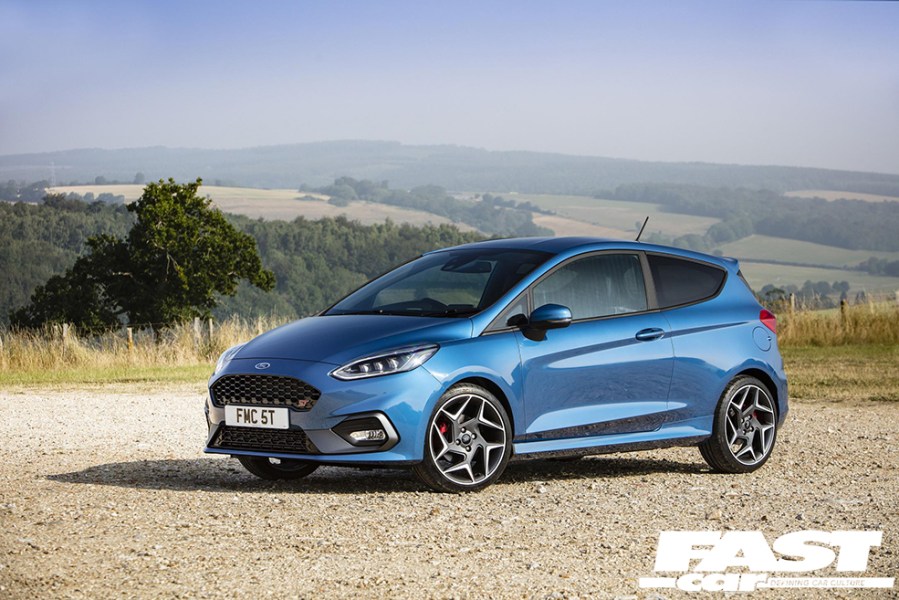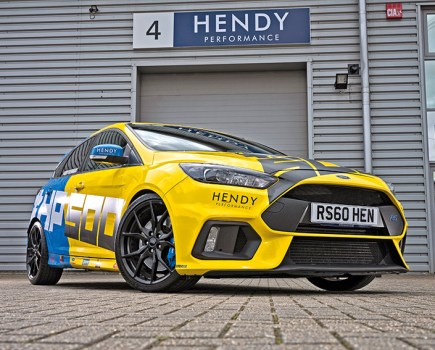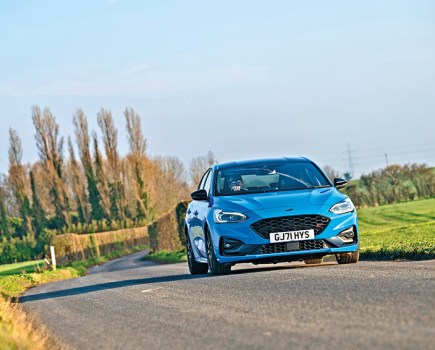If it ain’t broke, don’t fix it. That’s how the saying goes. How does the Fiesta ST Mk8 stack up on the road? We find out.
The Mk7 Fiesta ST was about the best bang for your buck. Widely regarded across the globe as not only being the best super mini on the market, but also one of the best cars, period, was quite the accolade. So why did Ford decide that for the new generation Fiesta ST Mk8 it would adopt a 3-cylinder engine and risk jeopardising it all? Emissions my friends. From where I’m sat, though, you shouldn’t be worried one bit.
Fiesta ST Mk8 design & specs
Let’s get down to business, that 3-pot. Ford’s already had experience in this area, with the outgoing Fiesta featuring a 3-pot engine in various guises, you could even get a 140ps lump, which shifted nicely. This new engine feels strong though. It feels as robust as its predecessor but not only that, it feels more eager to rev out. Power wise not much has changed. You get a tad more power but that’s about it. Weight wise it’s not that different either. What they have done though is introduce some clever suspension. Particularly at the rear. Which is why you’ll have seen a tonne of photos of the ST cocking a rear wheel under hard cornering.
Ford engineers have invented and patented something called force vectoring springs. It utilises a unique type of winding which in turn applies a force sideways to the rear suspension, which Ford says allows cornering forces to travel through the spring, making the rear stiffer.
According to the clever bots at Ford, there are other ways to do this, but this is the lightest and it’s said not to compromise comfort either. And, combined with Tenneco frequency-dependent dampers, the company that owns Ohlins, the rear roll stiffness is the hardest of any Ford Performance model, kudos.
Ford Performance director Leo Roeks said: “The car’s sophisticated dampers self-adjust to tune out high-frequency road imperfections when there is limited demand for damping – like on the motorway – but adjust again to deliver optimised road-holding performance when driven hard.”
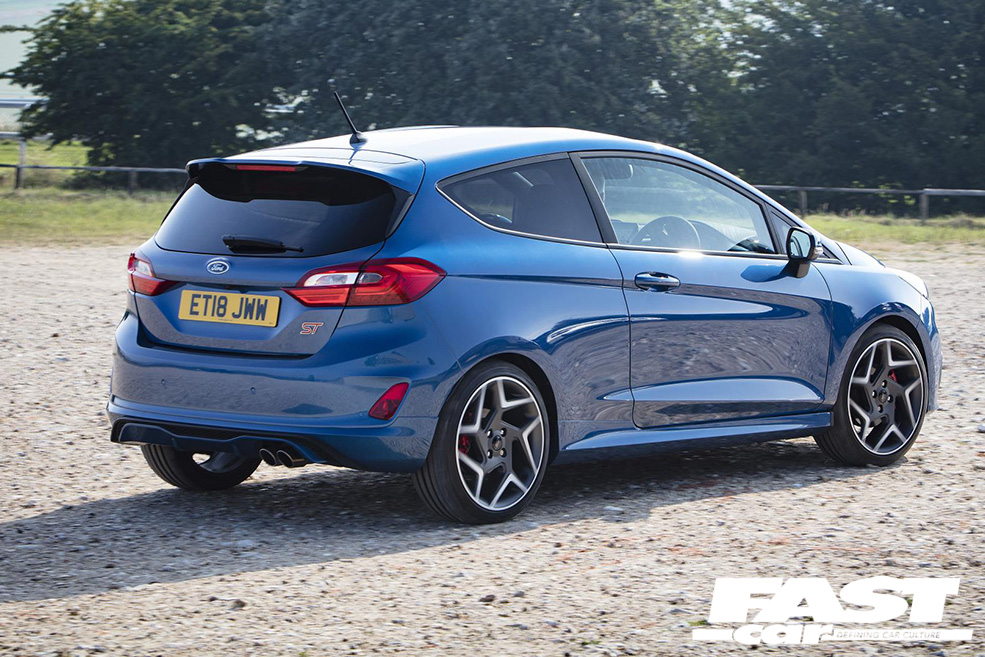
Interior
What else is new? Inside, Ford has upped the ante with its latest model offerings when it comes to the cabin. It’s no longer a place you sit in and go hmm, you can see where they’ve saved money. This is a premium offering now. You get the plush Recaro seats that have been a triumph of the ST and RS ranges for years now. Here they’re in regular comfort but you can opt for a more performance focused bucket.
What I will say is they’re a tad snug. I’m not a small lad, mind, so those skinnier than me won’t notice a thing. It does mean they’re brilliantly supportive when the going gets tough. You do still sit a little too high, but I personally think it’s better than the previous gen cars. Incidentally I own a Mk6 Fiesta ST, which sits far too high in stock form, so it was a welcomed drop in my opinion, but still slightly higher than the rivals. The Yaris GRMN feels king here.
Cabin tech
Next up, the tech on board is brilliant. One thing Ford has done well at is not to charge extortionate prices for options. Heated steering wheel? £100. B&O sound system (which is excellent by the way, although not quite as crisp as the offerings from the German premium brands) £500. The only option I thought was a tad odd was the £800 performance blue paint. But that’s smart marketing as every media outlet published photos of the car finished in said colour, which meant demand grew and Ford saw a way of making a little extra cash. Cheeky, but smart.
Elsewhere you get a nice touchscreen infotainment system, which is identical to the one found in the Focus and other Ford models. This comes with sat-nav and various other tech options. It’s an easy system to negotiate but I still prefer physical buttons, particularly in a car that is sprung as harshly as the ST. Which brings me on to my next point…
Ride & handling
My Mk6 ST is on coilovers and fully polybushed, yet it feels comfier than the slightly fidgety ride found here. On the same stretch of road, I felt far more imperfections in the road in the Mk8 than I did in my own, which is odd. Especially as Ford has been boasting about its marvellous suspension technology.
You forget about that the moment you hit a set of corners, though. Small cars do it better, simple as. Agility is at the heart of the ST and it feels as if it could pirouette on a sixpence. It’s change of direction is so sharp yet composed; it feels as if it was bred to do just that. I would imagine on a tight auto test course you’d be struggling to find a more suited car from factory within range of its price tag.
But best of all is the grip on offer. This car was a non-performance pack model, which meant it did away with the optional LSD. I was keen to work out whether I’d miss the LSD; I’m not convinced I did. There were a few moments where understeer felt like it could be better controlled with the additional grip offered with an LSD, but given it was December, you can hardly blame the car for wanting to wash out wide.
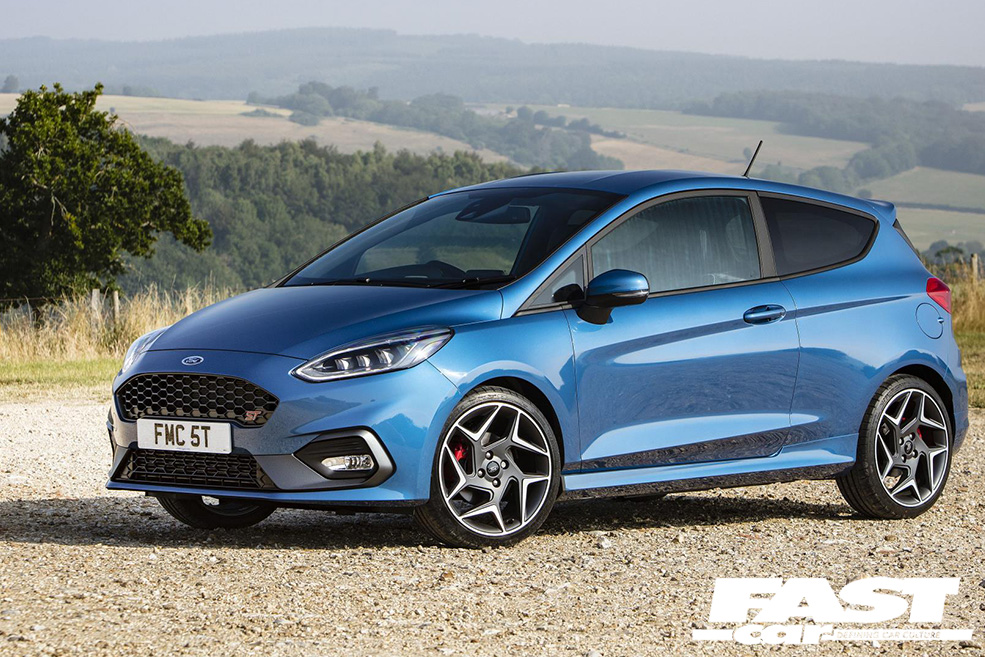
Performance
While there is a healthy amount of torque on offer, you start to work harder to utilise the power on offer and maximise traction, rather than be lazy and bury the throttle letting the car do the work. I’m not convinced the LSD is a worthwhile option for road use. OK, if you’re wanting to track the car 3/4 times a year, the Quaife LSD will help you, without doubt. That’s where the applications of a diff can really be felt; but on the road with around 200lb ft of torque on tap, I’d personally not spend the extra £1500. Also, oddly, this car had the launch control feature, which is seemingly only available to performance pack optioned cars. I’ll get back to you on why that is once I find out.
That engine is a marvel. It was only when I heard the car from the outside did I truly appreciate the angry little buzz it emits. It quite literally sounds like you’ve cut a V6 down to a bank of 3. But the whistles and blows from the turbo sounds brilliant and helps to shape that R5 rally car feeling that this ultimately embodies.
But when you just want to chill out and take things slow, the Fiesta becomes a Fiesta, who’d have guessed it? It’s no harder to drive or negotiate than a regular Fiesta, it quite obviously has the same amount of space and the running costs aren’t through the roof. High 30s on the MPG scale isn’t what we like to talk about but in reality, those buying want to know it can do that and it sure can. It can boil itself down as it becomes the first Fiesta to embrace different drive modes, so settings in Normal bring everything to, you guessed it, normal. Hop into Sport or Track and it does the opposite, simple.
Verdict
Would it be fair to say the best just got better? Probably. It’s far more rounded than a Yaris GRMN, it sounds infinitely better and comes in a darn sight cheaper. The new GR Yaris embodies a whole new performance factor that will no doubt blow the Fiesta out of the water, but at what cost? This car all in was under £23k. The new Yaris GR is likely to be another £10k on top of that. A Polo GTI that offers similar levels of performance and comfort but with the addition of a VW badge enters into the ring at a similar price point of £22k but being a VW, options will then cripple you.
Again, the Fiesta ST remains the best bang for your buck. Now with the opportunity to tone things down when you don’t want to be hooning just adds to its arsenal. And the worry of that 3-pot engine needn’t have been a worry. You may get jokes about it being smaller than a milk carton, but who cares when you fly off into the distance? It’s fun, affordable and now feels premium enough to justify its price tag inside.
If you’re considering buying one of these cars, why not also have a read of our Mk8 Fiesta ST tuning guide to see what sort of performance potential you could unlock.

